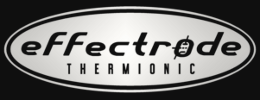The shaded-pole motor does not require a motor start capacitor nor does it require brushes—brushes are carbon contacts that supply current to the rotor (the bit that spins)—to conduct current into the rotor winding. Instead—and this is the clever part—currents are induced in the ‘rotor’ by induction and manipulating the shape of the magnetic field with thick copper wires (the shaded poles) embedded in the iron laminates of the ‘stator’ (the bit that stays still). The magnetic field in the stator laminates is generated by the AC current flowing in the primary winding, just like a transformer (there’s an excellent explanation of how shaded-pole motors work about 7 minutes into this YouTube video).
Because there are no brushes to wear out, rotor windings or start capacitor, the shaded-pole motor is exceptionally reliable and requires little maintenance. Furthermore, the rotor is factory balanced during manufacture to ensure even distribution of mass around the axis of rotation. Balancing is achieved by removing, or adding, a small amount of material from the metal alloy fins on the bottom of the rotor. The process reduces mechanical noise and vibration—stresses which cause excessive/adverse wear on the motor bushings—to significantly extend the life expectancy of the motor. A properly balanced shaded-pole motor runs so smoothly that it’s almost inaudible when operating; an essential prerequisite if it’s to be used in hi-fidelity audio equipment, such as a Binson echo machine or Garrard 401 turntable.
The rotor spins at fixed speed. Its synchronous speed is determined by the AC mains frequency and number of poles in the motor winding (not voltage!). This is 50Hz in UK, Europe, Australia and most of the world, except America where it is 60Hz.
The speed of the motor can be calculated:
ω = 2 × 60 × f / n
where
ω = pump shaft rotational speed (rev/min, RPM)
f = frequency (Hz, cycles/sec) = 50Hz
n = number of poles = 2
ω = 2 × 60 × 50 / 2 = 3000RPM
The voltage selector switch on the side panel of the ‘T7E’ selects various tap points on the primary winding of the power supply transformer allowing the machine to operate from European 220V, British 240V or U.S.A. 120V AC mains power. The transformer primary winding also doubles as an ‘autotransformer‘ ensuring the shaded-pole motor always sees the specified 220VAC it requires to operate correctly. This is essential as although the motor is synchronous, that is under no load conditions it spins at the same speed regardless of applied voltage, at low voltage it may not have enough torque to start up under load. This is because at reduced voltage the torque of a synchronous motor is reduced by the square of the voltage ratio. What this means in real terms is that if the voltage falls from 220V to 110V the torque decreases by a factor of four and the motor may stall, overheat and burnout.
It should also be kept in mind that the motor speed in a European Echorec will be about 20% faster when operated in America resulting in the overall delay time being 20% shorter. Altering the diameter of the rubber drive wheel or changing the voltage WILL NOT alter the speed of the disc. Echorecs manufactured for the American market under the ‘Guild’ brand name were fitted with motors that had smaller diameter spindles to correct the gearing ratio so the idler wheel was driven at the same speed as European models.
Incidentally, it is possible to roughly deduce the age of a particular model ‘T7E’ by examining the side of the motor where there’s normally a date of manufacture stamped in black ink. This isn’t a completely accurate estimate as the motor may have been sitting in stores for awhile, however the Echorec will certainly be no older than this date.
A few vital statistics taken from a real Echorec model ‘T7E’:
Measured drum diameter (d) = 4.7″
Drum circumference = π × d = π × 4.7 = 15″
Measured rotational speed of drum = 71RPM, so every minute, 71 × 15″ = 1065″ of the magnetic band on the drum surface passes across the heads. Converting this to inches per second:
1065 / 60 = 18ips, which is very respectable tape speed for hifi reproduction
The motor spindle circumference can be calculated from:
Drum ω = 71RPM
Drum circumference = 15″
Motor spindle ω = 3000RPM
Spindle circumference = 71 × 15″ / 3000 = 0.36″
The measured the spindle diameter was just over one tenth of an inch, which gives a circumference of about 0.31″.
The delay time can be calculated from the measured distance between heads which is 1.3″ (34mm). If the drum speed is 18ips = 457mm/s then delay time for the first playback head is:
First tap = 34 / 457 = 0.074s = 74ms
and the Second tap = 2 × 74 = 148ms
and the Third tap = 3 × 74 = 222ms
and the Fourth tap = 4 × 74 = 296ms
Bini put a great deal of thought into the positioning of the record and four playback heads around the circumference of the Echorec’s drum. Their relative distances are not entirely arbitrary and were chosen so that the delay times are musically related to one another. If the fourth tap is considered as representing a quarter note then the third tap is a dotted eighth note. This particularly inspiring repeat pattern has been put to good use by guitarists such as David Gilmour (Pink Floyd) and ‘The Edge’ (U2) to build some compelling riffs and grooves. Continuing on, the second tap represents an eighth note and the first tap a sixteenth note. These shorter delays can be heard in slap-back and rockabilly music from the 1950s and, again by Gilmour to good effect on tracks such as ‘Time’ (The Dark Side of the Moon).

